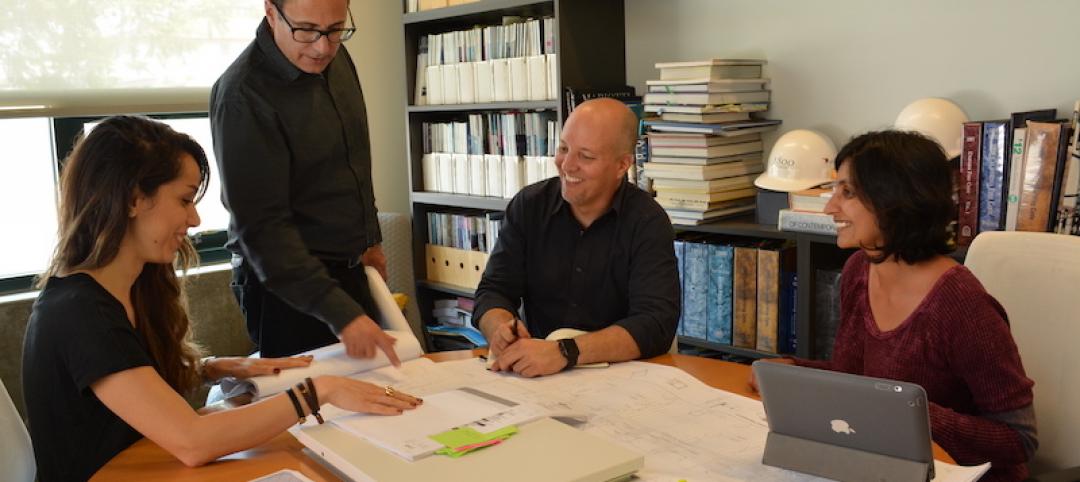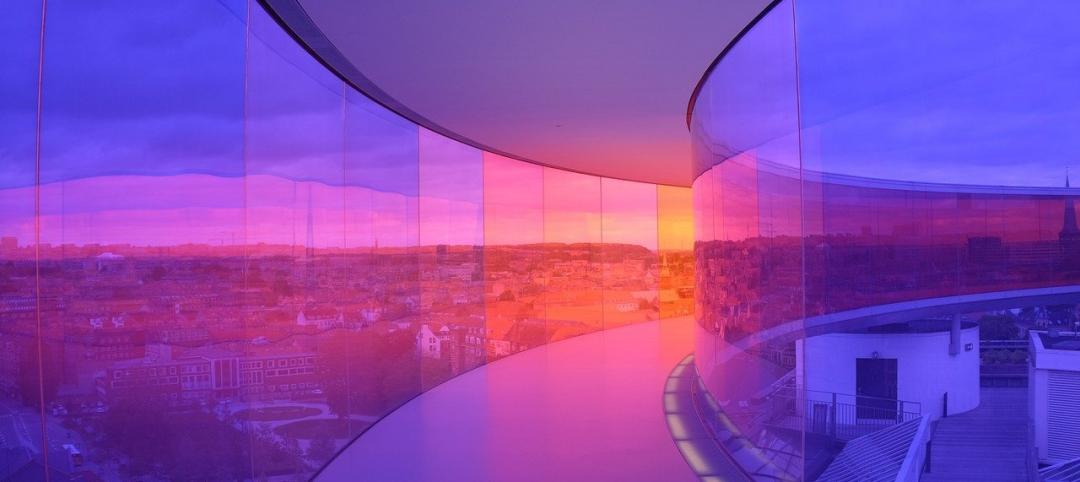Dissatisfied with the one-dimensional nature of defining energy efficiency as it relates to commercial buildings, international engineering firm Buro Happold developed a metric that links energy use to economic performance. The Building Economic Energy Coefficient (BEEC) could help many commercial building owners whose properties use a lot of energy (input), but add economic value to their cities and regions (output). This metric can also be a game changer that influences how local governments create policy to monitor the energy use of buildings.
(Download Buro Happold's white paper on the subject.)
Most systems of measurement deem a building efficient or inefficient based solely on how much energy it consumes. By contrast, BEEC measures a building’s energy use against economic performance indicators to give a more complete picture of a building’s productivity -- hence its overall efficiency. For example, a building might use less energy, but its tenants do not contribute as much to the regional economy. By this definition, another building that uses more energy might have an exponentially greater economic performance, making it more efficient.
When observed from this more comprehensive vantage point, some buildings that were previously thought of as energy hogs are revealed to be using energy more efficiently than many low-energy buildings. Buro Happold used proprietary research from CoStar Group to determine economic performance of commercial buildings in New York.
“Energy efficiency is framed in a very black-and-white way – either a building has low energy intensity or it is considered wasteful. With this research, we can now see whether or not commercial buildings are putting energy to good use. It allows us a much more nuanced and complete picture of what’s really going on with energy use,” said Steven Baumgartner, PE, CEM, HBDP, LEED AP, associate at Buro Happold, who led the research team, along with Jim Coleman and Amelia Aboff of Happold Consulting, Buro Happold’s strategic consulting arm.
City officials, building owners, and members of the AEC industry measure a building’s energy use on a per square foot, per year basis. This is known as its Energy Use Intensity (EUI). EUI is a very useful metric in determining a building’s performance but it only tells half of the story.
“Buro Happold has been a pioneer in sustainability for decades, and now we are intensively involved in the challenges of the 21st century,” said Craig Schwitter, PE, BSCE, MSCE, principal. “We are a multidisciplinary firm that brings a comprehensive approach to problems at multiple scales – from the individual building to the region. This groundbreaking research will have a major impact on the way that energy use is discussed and regulated as we meet the ongoing challenges of an increasingly complex world.”
BEEC data is currently limited to New York City commercial buildings. With more funding, Buro Happold hopes to expand the scope of the research to include more cities, and with greater detail. “This is a huge first step toward redefining energy efficiency,” added Baumgartner, “and we’re excited to take this research to the next level.”
Related Stories
Architects | Mar 25, 2021
The Weekly Show, March 25, 2021: The Just Label for AEC firms, and Perkins Eastman's Well-Platinum design studio
This week on The Weekly show, BD+C editors speak with AEC industry leaders about the Just Label from the International Living Future Institute, and the features and amenities at Perkins Eastman's Well Platinum-certified design studio.
Architects | Mar 23, 2021
Design firms KTGY, Simeone Deary Design Group unite to shape future of architectural design through experiential environments
With a bold vision to reshape how people experience spaces, residential design firm joins forces with interior design group, creating fully integrated architecture, branding, interiors and planning practice.
Architects | Mar 15, 2021
A life in architecture – Lessons from my father
A veteran designer looks back on the lessons his father, a contractor, taught him.
Architects | Mar 11, 2021
Calling all building design professionals: BD+C needs your expertise on design innovation in 2021
This new BD+C research project explores the leading drivers, sources of inspiration, and successful outcomes for design innovation projects and initiatives.
Coronavirus | Mar 11, 2021
The Weekly show, March 11, 2021: 5 building products for COVID-related conditions, and AI for MEP design
This week on The Weekly show, BD+C editors speak with AEC industry leaders about building products and systems that support COVID-related conditions, and an AI tool that automates the design of MEP systems.
Laboratories | Mar 10, 2021
8 tips for converting office space to life sciences labs
Creating a successful life sciences facility within the shell of a former office building can be much like that old “square peg round hole” paradigm. Two experts offer important advice.
AEC Tech | Mar 4, 2021
The Weekly show, March 4, 2021: Bringing AI to the masses, and Central Station Memphis hotel
This week on The Weekly show, BD+C editors speak with AEC industry leaders about the award-winning Central Station Memphis hotel reconstruction project, and how Autodesk aims to bring generative design and AI tools to the AEC masses.
Architects | Mar 1, 2021
OMA designs 7-mile-long underwater sculpture park
The project will be completed in several phases.
Architects | Mar 1, 2021
AIA elevates 102 members to the College of Fellows
AIA fellowship recognizes significant contributions to the profession of architecture and society.

















